How to design the booking flow of your service marketplace
How ten well-known marketplaces match supply and demand, and how to pick the right approach for you.
Published on
Last updated on

Successful marketplaces match supply and demand efficiently. This article helps you find the best approach for your idea.
Mastering the booking flow of your service marketplace is key in offering a smooth experience and getting as many transactions as possible. To model it, you have to understand how your customers search for what they need, where and when the service is provided, and how and when the payment is made.
Online stores often resemble each other. You add a product to a shopping cart, check out, and the item is shipped to you. The same flow applies to traditional e-commerce marketplaces where providers sell physical or digital products. No matter the type of product being sold, a similar process works well.
The situation changes, however, when you start dealing with intangible services: booking a haircut, renting a car for a week, purchasing a kitchen renovation, or hiring a freelance coder. When dealing with such services, the transaction process becomes a lot more complicated. Think of a kitchen renovation, for example. You can't simply add it to a cart and check out—the decorator will want to see your kitchen before giving you a quote, which requires an appointment at your home. They might not even be available for the job, or their quote might be too high. The decorator may want to invoice half of the bill in advance and the rest when the work is done.
If you're booking a haircut, the flow is very different. Instead of booking an appointment at your home, you'll want to find a hair salon close to your daily commute. You also need to make sure the hairdresser is available at the desired time. Once these conditions are met, you can book the visit and pay for it in advance, with little need for interaction.
If you're building a service marketplace and want to "own" the transaction (which is necessary if your marketplace business model is commission-based), you need to carefully design your checkout flow to match the needs of your customers and providers. If you fail to do so, your marketplace will suffer from disintermediation: your users will bypass your payment system and you will lose revenue.
Three key dimensions affect the booking flow of every service marketplace: time, location, and price formation.
When is the service provided? There are two ways to answer this question: straight away (on-demand) or at a specific time (scheduling). The choice depends on the needs of the customer and the availability of the provider.
If you're hailing an Uber ride, you want the driver to pick you up right away. If you're searching for an Airbnb flat for your upcoming holiday trip instead, you don't want the booking period to start the second you confirm your purchase, even if the desired flat is currently available.
With the on-demand approach, your marketplace platform should know whether a certain provider is currently available for new work. Meanwhile, in the scheduling approach, customers typically filter their search by the availability of providers for certain dates or times, which means the providers need to keep their calendars up to date. If availability information is not available at the time of the booking, customers will need to message providers, resulting in a poor experience for both parties and an increased likelihood of disintermediation.
Does the location of the provider matter? Some services—software development, accounting, coaching with a video call—can be provided virtually, while others—a home renovation, a haircut, a car rental—require the provider, customer or both to be at a specific location.
If location matters, it needs to be a key component in the booking experience. Providers might only want to serve customers that are close by. Conversely, customers might not want to deal with providers in another city, even if the providers would be up for it. Both sides should be able to specify where they want to conduct the business.
Can the price of the service be determined without a negotiation between the customer and the provider? If the answer is yes, you're in luck: preventing disintermediation becomes a lot easier. The less back and forth between the customer and provider, the better. A packaged service offering can be purchased with a checkout flow that is similar to traditional e-commerce, while a negotiated offering needs a more complex process.
Packaging also allows for a better customer experience since customers can easily compare different offerings. For instance, Timma, a marketplace for hairdressers, noticed that different hairdressers had several different names for their service packages. Timma wanted to simplify comparisons for customers, so it forced every hairdresser to use its six standard labels for haircutting services.
You should always investigate the possibility of packaging and standardizing the offerings of different providers. Depending on the marketplace, it can be very challenging—think of kitchen renovations, for example. However, many successful marketplaces have created creative workflows to standardize even relatively complex service offerings. For example, YourMechanic takes you through a series of questions about what needs to be done to your car and determines the price based on your answers. Creating a similar process for kitchen renovations would involve an even more complex process, but it might still be doable.
A special case occurs in marketplaces of packaged services that have no differentiation between service providers—a situation called perfect competition. As a customer, you don't care who the provider is, so the platform can make the decision for you. This is helpful when the service should happen as soon as possible, like summoning an Uber driver in three minutes. We're calling this a fixed price formation strategy.
A fixed price provides a great customer experience, but it only applies in rare cases. If you want to get a haircut from your favorite hairdresser through Timma, you're at the mercy of the provider's schedule. Even if other hairdressers are available immediately and have a lower price, you still choose to book a slot three weeks from now and pay a premium to get the quality you're after.
Based on where your marketplace falls on these three dimensions—time, location, and price formation—you can place yourself in the booking matrix. Here's how a few well-known marketplaces are positioned in the matrix.
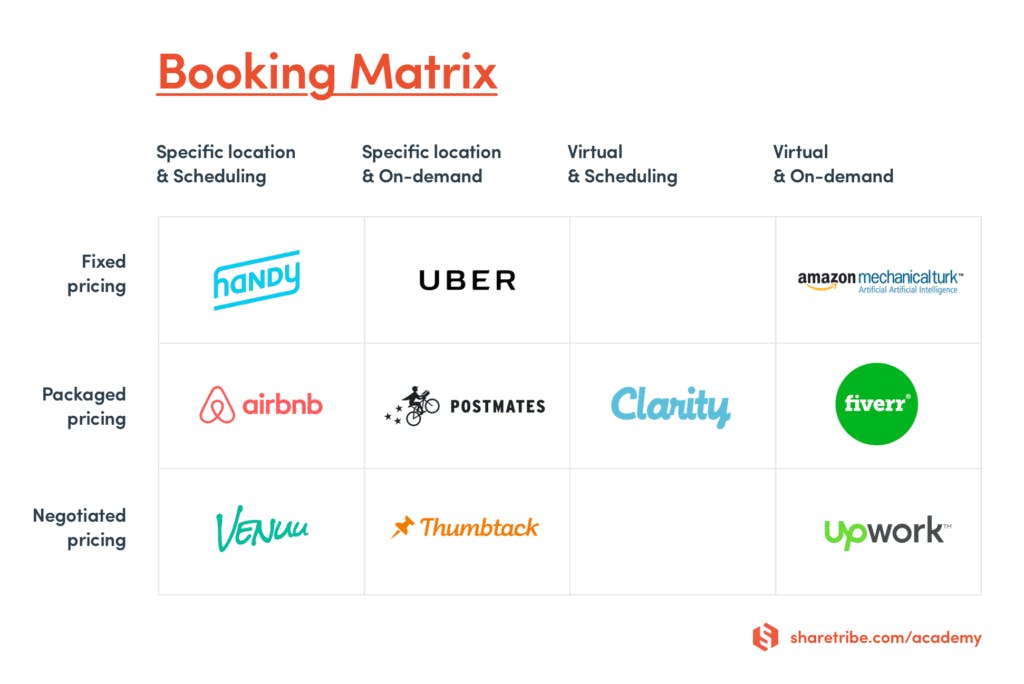
We're now going to take a look at the booking flows of the well-known marketplaces listed in the booking matrix.
Airbnb and other marketplaces that rely on specific location, scheduling, and packaged pricing have relatively similar booking flows. An example of a typical flow:
- Provider adds their service description, pricing, and availability to the marketplace.
- Customer searches for providers based on location and availability.
- Customer picks a provider, chooses a date and time, makes a booking, and pays the booking price.
- Provider accepts the booking (optional).
- Money is charged from the customer and the provider is notified about the booking.
- Provider provides the service during the booking period.
- Money (minus commission) is paid out to the provider.

Almost all rental marketplaces fall into this category, with the exception of more complex space rentals that require heavy negotiation, like wedding venues. Other common examples are marketplaces that deal with events, classes, or experiences like EatWith or WeTeachMe, and professional service marketplaces where the providers operate out of a specific location like hairdressers or personal trainers.
Uber relies on specific location, uses fixed pricing, and serves its customers on-demand. Here's what Uber's flow looks like:
- Customer posts a task to the marketplace ("I want to get from place A to place B") and gets an automatic price estimate.
- Uber assigns the task automatically to the most suitable provider based on their location. If the provider declines, Uber assigns the next provider, and so on.
- Provider performs the task.
- Final price is determined once the ride is over.
- Customer is billed.
- Provider gets their share after Uber has deducted its commission.
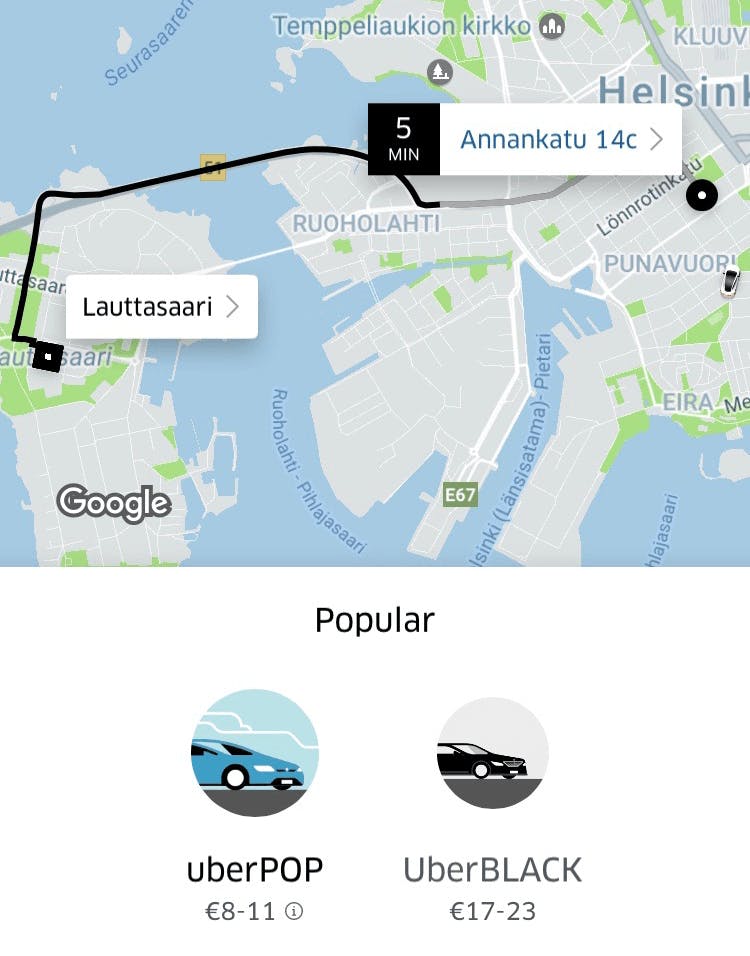
While many people state they are building Uber for X, only a few marketplaces actually share all the same characteristics as Uber. The next two flows are good examples of this.
Delivery startups like Postmates, Deliveroo, and Instacart are similar to Uber in many ways (they also rely on specific location and serve their customers on-demand), but also have clear differences. These platforms are actually "three-sided marketplaces"—in addition to the delivery service, the food needs to be purchased from a restaurant or grocery store. The main differences compared to Uber's flow are related to their packaged pricing and how the customer is billed.
Here's how such a flow works:
- Restaurants add their offerings, opening hours, and prices to the platform.
- Customer searches for restaurants in their local area.
- Customer chooses the dishes they want.
- Customer sees the total price and pays.
- Restaurant gets the order and gives the app an estimate of when the food is ready.
- Restaurant prepares the food.
- Platform assigns the delivery task to the most suitable courier, using a similar algorithm as Uber.
- Courier delivers the food to the customer.
- Platform splits the money between three parties: the restaurant, the courier, and the platform.
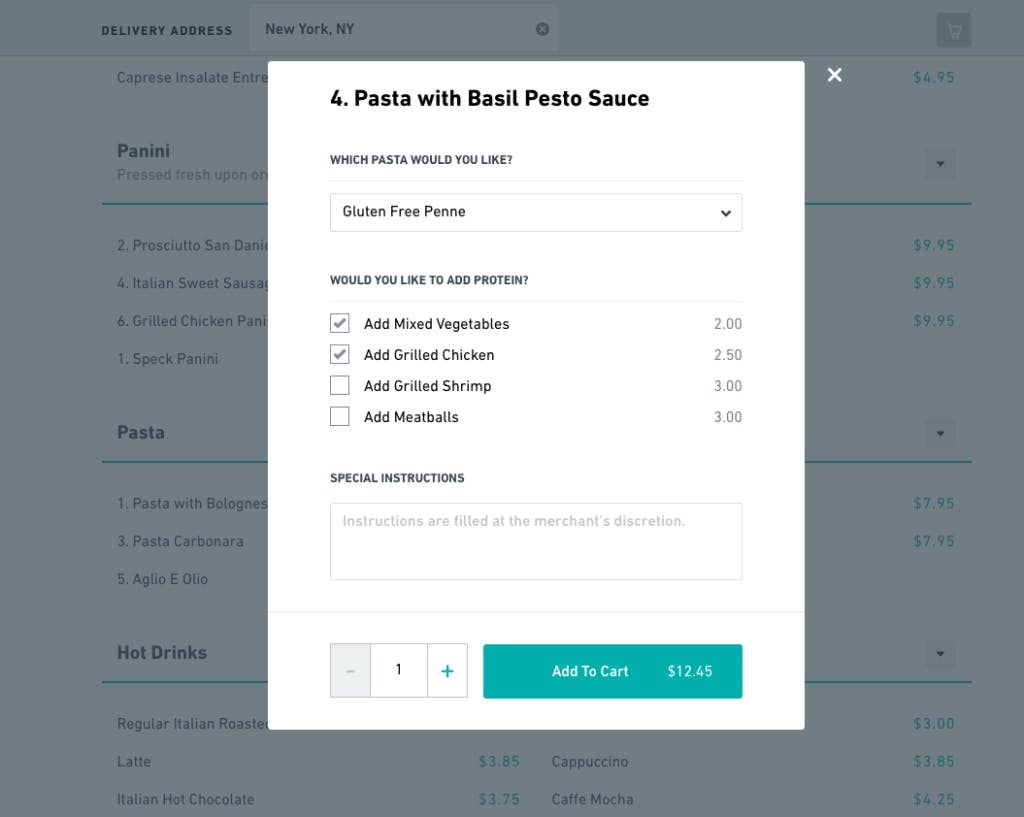
Another category of service marketplaces that are often labeled "Uber for X" are platforms that deal with services that happen in a specific location and have fixed pricing but rely on scheduling. Home cleaning marketplaces like Handy (which nowadays also offers services other than cleaning) and Hassle are good examples of such platforms.
Here's how their flow works:
- Providers add their availability information to the marketplace and keep it up to date.
- Customer provides their location.
- Customer provides the exact date and time when they want the provider to do the work, and other essential details about the task (what type of cleaning, etc.).
- If providers are available in that location at that time, the customer is prompted to make the payment immediately without having to select a provider.
- Marketplace automatically assigns the task to a suitable provider.
- Provider performs the job at the scheduled time.
- Provider gets paid after the job is completed and the marketplace's commission is deducted.
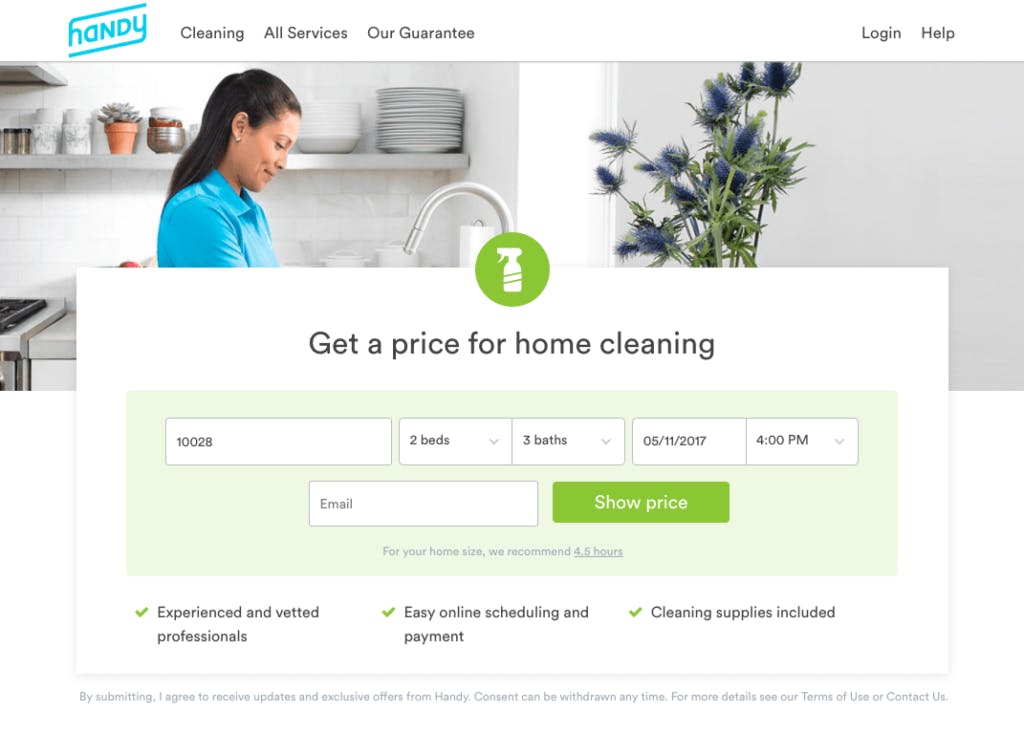
This flow is probably the simplest for the customer: there's no negotiation and no browsing, you get to know the exact price up front, and you'll likely be able to book the service on short notice. Many modern marketplaces are trying to think of ways to package the offerings of their providers to fit this flow. Examples include the already mentioned YourMechanic for car repairs and Snappr for professional photographers.
As we saw, Handy's simple flow offers a great customer experience. Unfortunately, many services cannot be simplified into such a straightforward workflow. Thumbtack deals with hundreds of different home improvement categories—from carpenters to electricians—with a wide variety of pricing strategies. It's not possible to build a packaged workflow for all these categories, so Thumbtack has instead opted to build its platform around negotiated pricing. It's generally not possible to know how long the work will take in advance, so Thumbtack cannot use scheduling but opts for on-demand instead. What all the services offered through Thumbtack have in common is that they happen in a specific location.
This is what their flow looks like:
- Customer provides their location.
- Customer describes the type of service they need by answering a series of questions.
- Provider browses new requests from potential customers.
- Provider pays Thumbtack a fee to be able to send a quote to the lead.
- Provider sends a quote.
- Customer and provider agree on the details and price.
- Provider provides the service.
- Provider invoices the customer outside the marketplace platform.
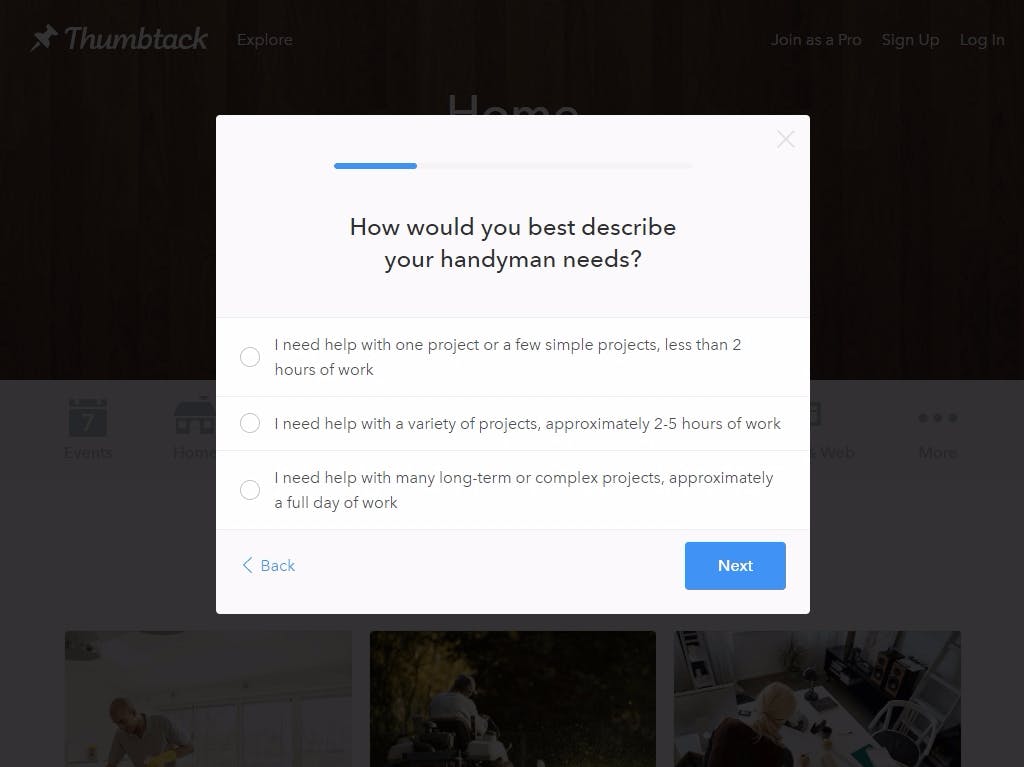
The problem with Thumbtack's workflow is that they're not in control of the entire transaction: steps 4-7 happen outside the platform. This means less revenue for Thumbtack as the lead fee model is less lucrative than the commission model. It also means more hassle for both the customer and the provider.
I predict that Thumbtack will see increased competition from marketplaces that focus on one of its hundreds of niches. These marketplaces will be able to create a packaged user experience specialized for that niche. This is already happening in many industries where Thumbtack is active: in addition to Handy, YourMechanic, and Snappr mentioned above, Rover has created such an offering for pet sitting and dog walking, Wyzant for home tutoring, and EzCater for catering services. Thumbtack will have a hard time competing with all of them at once.
Upwork resembles Thumbtack in many ways. It is also a marketplace for professional service providers. Since the quality and type of work offered by the providers vary a lot, a packaged offering is not feasible for Upwork either; negotiated pricing is required. However, there's one clear difference: while Thumbtack caters to local service professionals, Upwork is all about virtual work from freelancers like software developers, designers, and accountants. The customers generally don't care when the work is done, so the on-demand approach works well for Upwork.
This is how Upwork's flow works:
- Customer describes the type of service they need and their budget.
- Provider browses new requests from potential customers.
- Provider makes a bid on a request.
- Customer reviews the bids from different providers and accepts one of them.
- Provider and customer communicate on the delivery of the service via Upwork's messaging system.
- Provider does the work and delivers it through Upwork's tools.
- Provider sends an invoice through Upwork's system.
- Customer makes a payment.
- The money is paid out to the provider after Upwork deducts its commission.
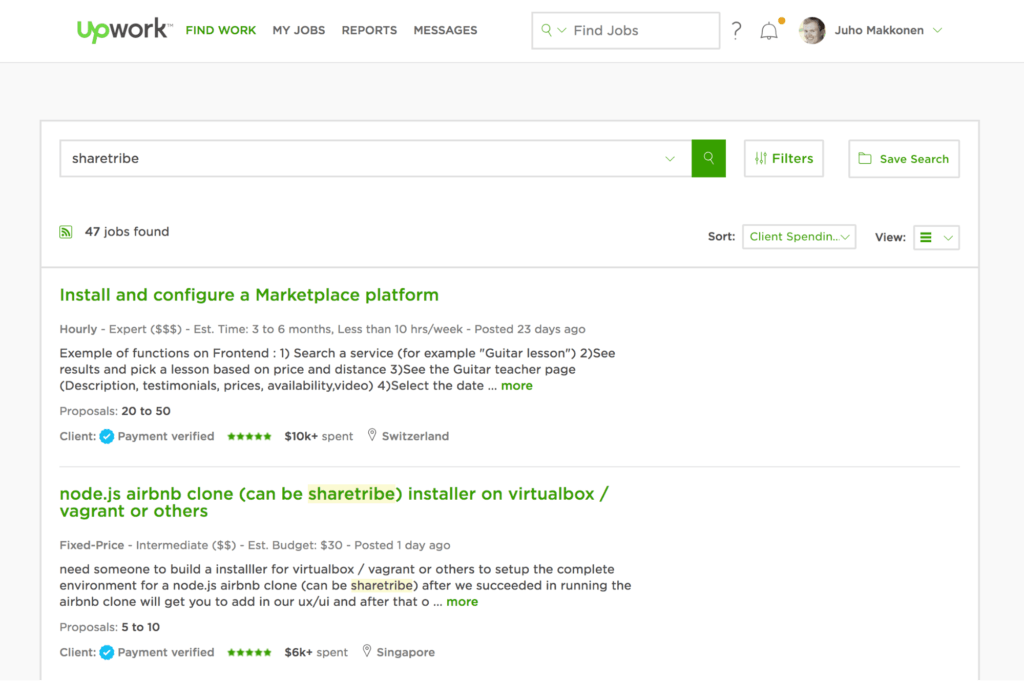
Unlike Thumbtack, Upwork is able to control the entire transaction flow. The key reason for this is the virtual nature of the tasks handled by Upwork. Its customers and providers don't need to meet each other, resulting in fewer means to circumvent the marketplace payments. The work is delivered online, which means Upwork can provide a complete set of tools to help both the customer and provider manage their entire workflow.
Fiverr is a competitor to Upwork. It also offers on-demand virtual work like software development and design. However, while Upwork focuses on larger gigs that go from hundreds to several thousands of dollars, Fiverr (as it name suggests) excels in small tasks that start from just five dollars. The providers scope these tasks extremely narrowly: for five dollars, you can get an English voiceover for a text of 125 words or a custom icon. Many providers also offer more expensive services, but they always use the same packaged pricing approach.
Here's what Fiverr's flow looks like:
- Provider adds their offerings and pricing to the platform.
- Customer browses providers based on a task they want completed.
- Customer chooses a provider and a package, and makes a payment.
- Provider does the work and delivers it to the customer.
- Provider gets paid after Fiverr deducts its commission.
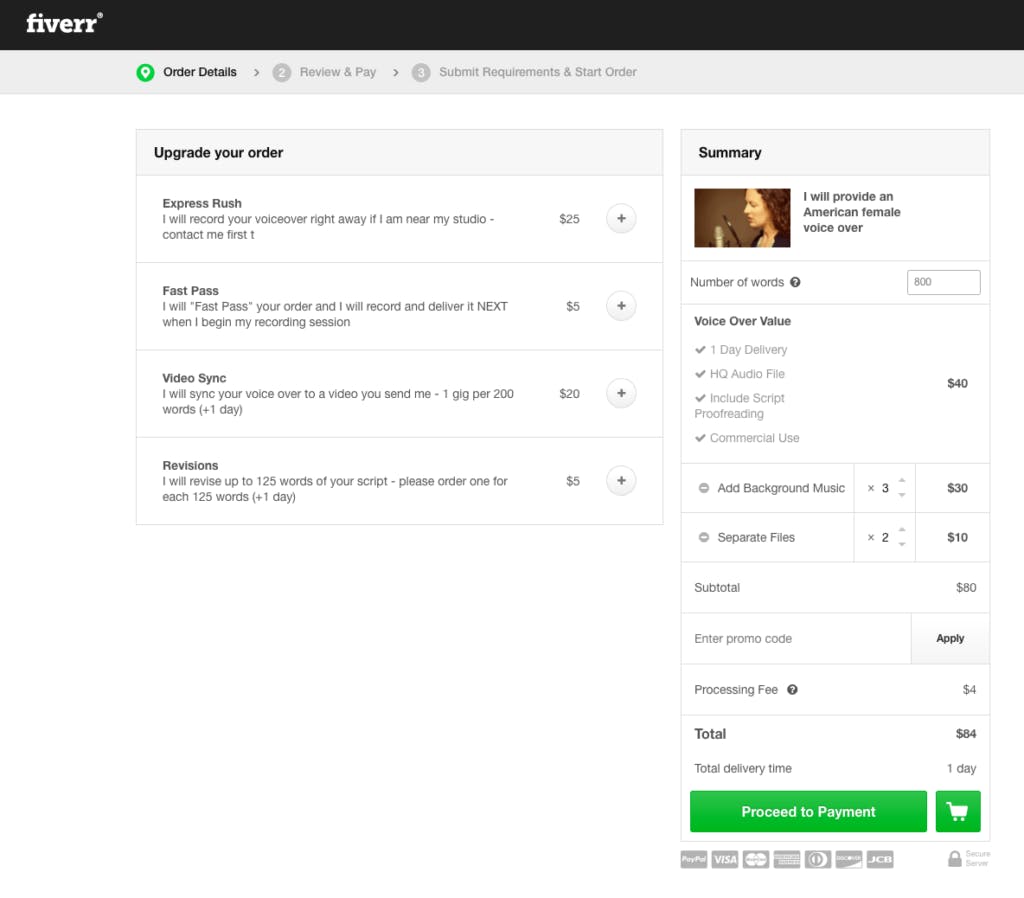
As Fiverr's example shows, it's possible to package complex services like graphic design in a way that enables a simple customer experience. The experience is smooth for providers as well: because of the pre-packaged services, they don't need to spend any time negotiating with their customers.
The simplest of all workflows for purchasing on-demand virtual work is provided by Amazon's Mechanical Turk. Mechanical Turk deals with extremely simple microtasks that anyone can perform, which means they are able to use fixed pricing. A typical example is going through a list of one thousand photos and tagging them with suitable keywords. The pricing is per photo, and one set can be processed by one or several providers.
This is how their flow works:
- Customer gives a description of the work and sets a price for it.
- Providers pick tasks on a first-come, first-served basis.
- Providers complete the work.
- Customer accepts the completed work.
- Customer is invoiced.
- Providers are paid after the marketplace deducts its commission.
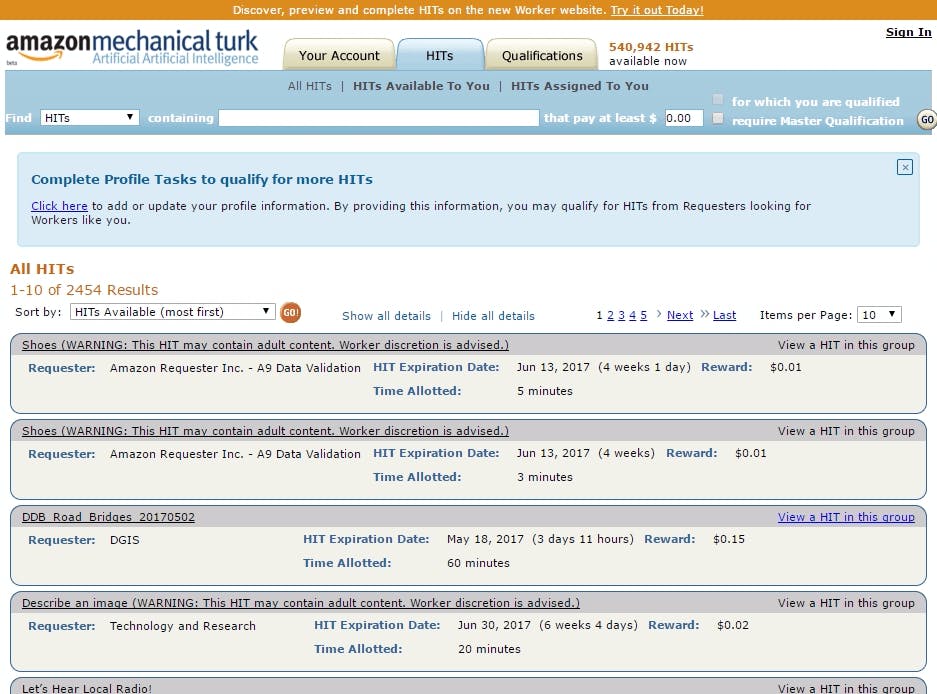
This is a pleasant experience for customers, but relatively few services in the world fit this simplistic workflow—and it's likely that, as technology advances, an increasingly large portion of them can be automated by computers.
Most virtual services don't require scheduling since the provider and the customer rarely have to meet. Some virtual services, however, do depend on setting up a time to meet. A typical example is live coaching via a video call.
Clarity is a marketplace for startup advice. Through their site, you can schedule a call with a leading expert in your field. The skill level of their providers varies a lot, so packaged pricing is required. The hourly prices of calls are typically relatively expensive, but a call as short as 15 minutes can be enough to get the advice you need.
Here's how their flow works:
- Provider creates a profile and describes their skillset and pricing.
- Customer browses experts to find one who knows the most about their field. Prices for calls are listed by the minute.
- Customer chooses from three starting times that suits them.
- Provider chooses one of the suggested starting times.
- Customer and provider start the call through Clarity.
- Customer is invoiced after the call based on the duration of the call.
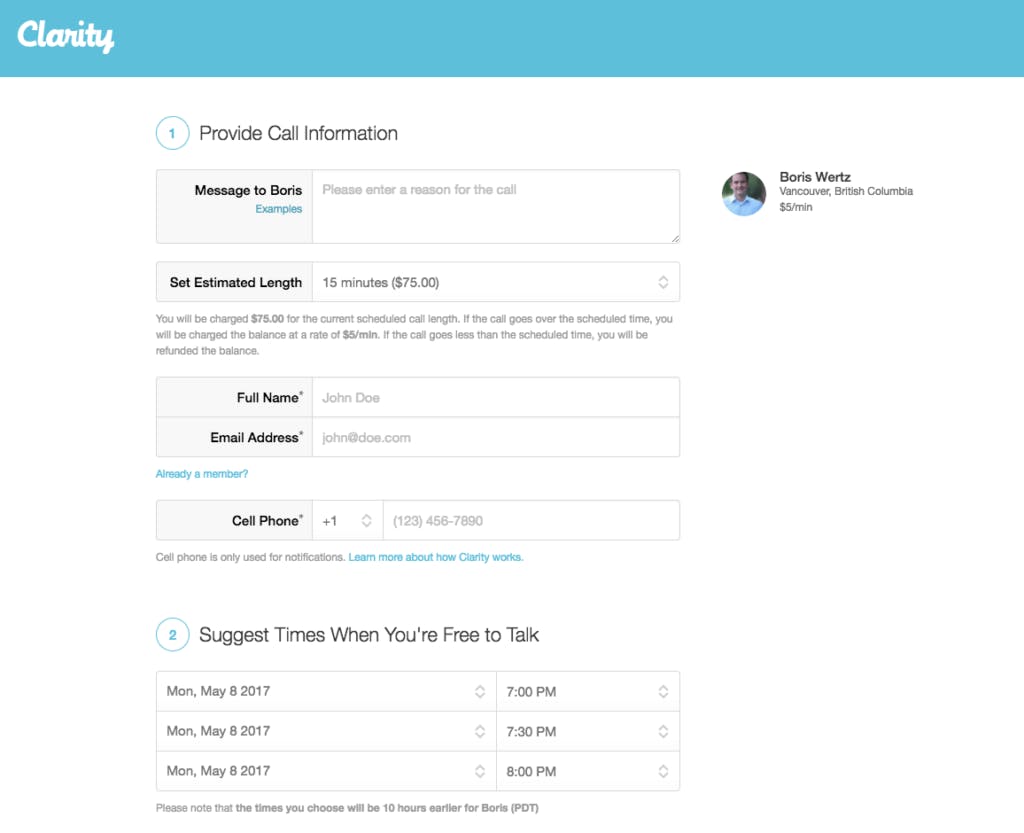
When selecting the time slots, customers are prompted to take into account the provider's timezone. This timezone problem is a great example of a booking flow issue that only affects marketplaces that are scheduled and virtual.
It's noteworthy that Clarity doesn't require customers to define the call length beforehand, most likely because the length cannot be predicted in advance and the busy expert providers might be reluctant to keep their calendars up to date. However, this does mean there's some back and forth between the customer and the provider to find a suitable time slot. This makes the user experience cumbersome for both parties, and provides opportunities for disintermediation. Clarity is likely losing some revenue because of this choice.
If the service needs to be provided at a certain location at a specific time, it's almost always possible to package the offering. Not many marketplaces need to use the combination of scheduling, specific location, and negotiated pricing. Finnish event space rental marketplace Venuu, however, is one of them.
If you're booking a venue for your wedding, many variables affect pricing. The deal might include decoration, staff, catering, and so on. Additional requirements are sometimes added on the fly. Oftentimes you meet the owner of the venue before committing to the booking. Since the booking might be made several years in advance and the rent can be expensive, you typically pay a deposit when you make the booking.
To accommodate this complexity, Venuu uses the following flow:
- Venues add their description, availability, and pricing to the platform.
- Customer searches for venues based on location.
- Customer checks venue's calendar to see if they are available during the chosen dates.
- Customer makes a booking request, describing what they need.
- Customer and provider might meet at the venue to discuss the details.
- Provider confirms the booking through the platform.
- Provider sends an invoice of the deposit to the customer.
- Customer pays the invoice.
- After the event date has passed, Venuu sends an invoice to the venue to charge their commission.
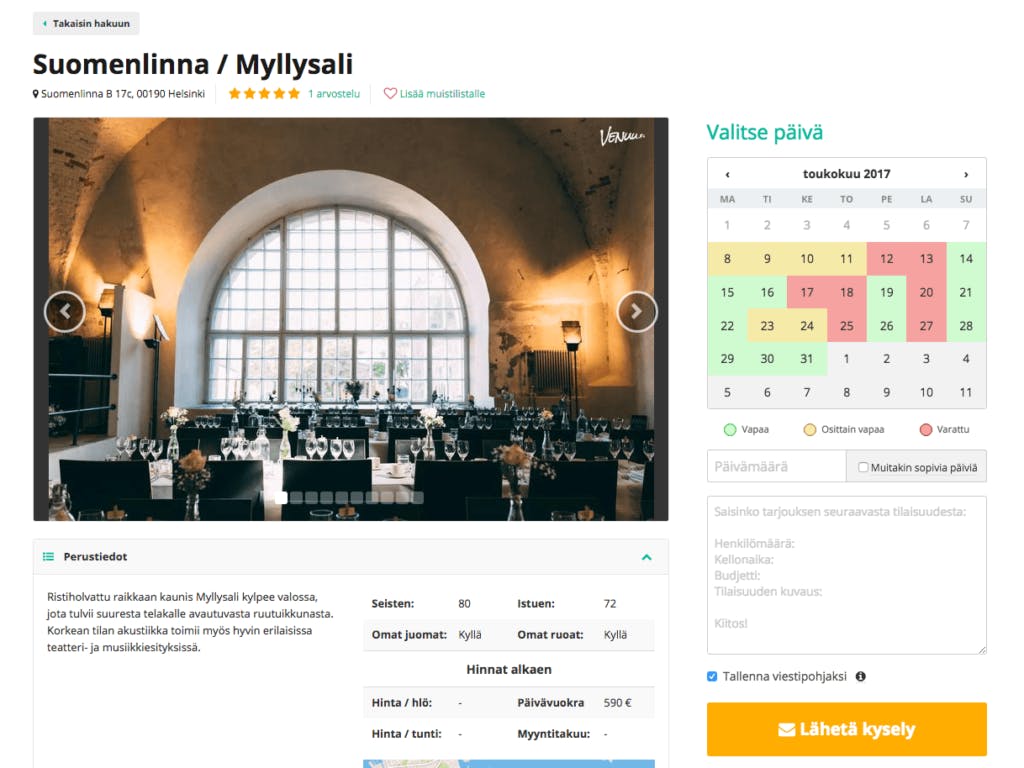
The problem with this flow is that Venuu doesn't have full control over it—steps 4-8 happen outside the platform. This increases the likelihood that providers fail to report some of the bookings they receive through Venuu, resulting in loss of revenue. If Venuu can build a flexible system to accommodate all the variables that affect pricing and charge the advance deposit, they might be able to improve the customer experience and capture more revenue.
Two empty cells exist in the booking matrix: scheduling + virtual + fixed pricing and scheduling + virtual + negotiated pricing. I am currently not aware of any marketplaces that focus on these areas. This doesn't mean that no such marketplace ideas exist.
What kind of marketplace might use the combination of scheduling, virtual, and fixed pricing? Not many virtual services are trivial enough to justify the same price for all providers. One example that comes to mind is a service where you can hire any native speaker of a language for one hour to teach you the basics of the language. I'm not sure if such a service could exist in reality, but if it would, it would deserve its own, unique booking flow.
How about scheduling, virtual and negotiated pricing? Let's say you want to hire someone to organize a virtual conference for you. Many companies already specialize in organizing such events. A marketplace that gathers all such companies under one roof would likely fit this cell.
Are you building a marketplace that fits one of the missing cells? Let us know and redeem your spot in the matrix!
With the framework introduced in this article, you are now equipped with enough knowledge to design the booking flow of your marketplace. Start by figuring out whether you can use packaged, fixed, or negotiated pricing. Once that is done, position your service in the correct cell based on the time and location dimensions.
Of course, the example flows presented here are just a starting point. Other components will depend on your unique concept. Each marketplace is different, and therein lies your opportunity: build an optimal booking flow specifically for your niche. A great flow not only creates an optimal user experience for both the customer and the provider, but it also makes financial sense by reducing the incentive to bypass your service's payment system.
You might also like...

Marketplace software: How to compare and choose the best solution
There are dozens of online marketplace software alternatives to choose from. Learn how to make the right choice for your marketplace idea.

How to design your marketplace transaction flow
The science behind minimal abandoned carts for marketplace platforms.

Marketplace payments: The complete guide
Marketplace payments are very complex. This guide helps you list your feature requirements and compare and choose the best marketplace payment provider for you. (Yes, there's a comparison table!)
Start your 14-day free trial
Create a marketplace today!
- Launch quickly, without coding
- Extend infinitely
- Scale to any size
No credit card required
